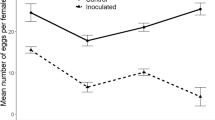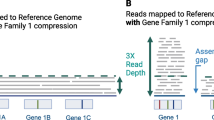Abstract
Wolbachia bacteria are obligatory intracellular parasites of arthropods and have been detected in about 70 species of parasitic wasps and three parasitoid flies. Wolbachia are transmitted cytoplasmically (maternally) and modify host reproduction in different ways to enhance their own transmission: parthenogenesis induction (PI), cytoplasmic incompatibility (CI), or feminization (F) of genetic males. Only PI and CI are known in parasitoids. PI-Wolbachia cause thelytoky in otherwise arrhenotokous parasitoids by generating diploid (rather than haploid) unfertilized wasp eggs. CI-Wolbachia cause incompatibility of crosses between infected males and uninfected females because the paternally derived chromosomes fail to decondense and are destroyed after syngamy. More complex situations arise when hosts harbor multiple infections, which can lead to bidirectional incompatibility and may be involved in parasitoid speciation. The relative fitness of infected and uninfected hosts is important to the population dynamics of Wolbachia, and more data are needed. Evolutionary conflict should be common between host genes, Wolbachia genes, and other "selfish" genetic elements. Wolbachia-specific PCR primers are now available for several genes with different rates of evolution. These primers will permit rapid screening in future studies of spatial and temporal patterns of single and multiple infection. Molecular phylogenies show that CI- and PI-Wolbachia do not form discrete clades. In combination with experimental transfection data, this result suggests that host reproductive alterations depend on the interaction between attributes of both Wolbachia and host. Moreover, Wolbachia isolates from closely related hosts do not usually cluster together, and phylogenies suggest that Wolbachia may have radiated after their arthropod hosts. Both results support considerable horizontal transmission of Wolbachia between host species over evolutionary time. Natural horizontal transmisson between parasitoids and their hosts, or with entomoparasitic nematodes or ectoparasitic mites, remains a tantalizing but equivocal possibility.
Similar content being viewed by others
Author information
Authors and Affiliations
Additional information
Received: November 27, 1998 / Accepted: January 15, 1999
Rights and permissions
About this article
Cite this article
Cook, J., Butcher, R. The transmission and effects of Wolbachia bacteria in parasitoids. Res Popul Ecol 41, 15–28 (1999). https://doi.org/10.1007/PL00011978
Issue Date:
DOI: https://doi.org/10.1007/PL00011978




